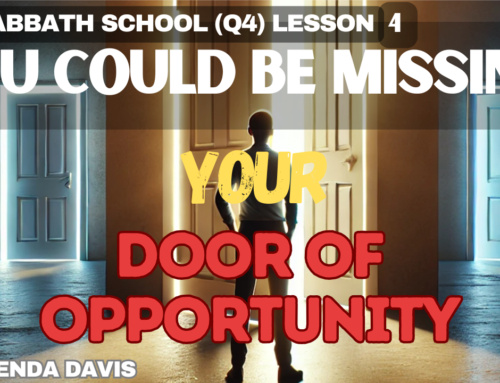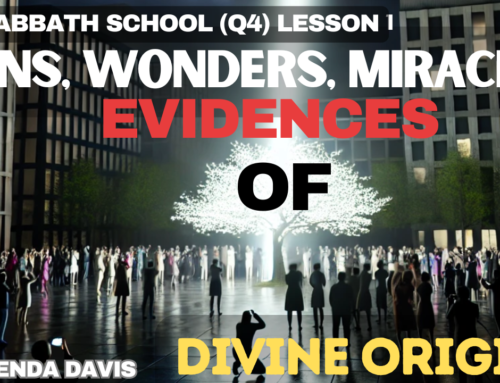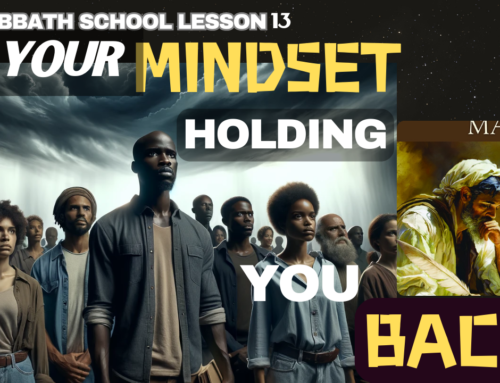A Simple Guide to Gaining the Most out of Your Reading
My objective for reading is to accumulate knowledge that is useful to me and to others so that I can take that accumulated knowledge, reproduce it, and give it to others that may be interested in obtaining useful information. My question to you is: What are you reading for?
Before you pick up your next book or read your next blog post you need to know that when people read, they are reading for one of two purposes. They are reading for either understanding or for information (Farnam Street, 2020)
The problem is, one is more effective in accumulating knowledge.
In accumulating knowledge, you need to know that if what you are reading is easily digested, then you are reading for information, but you are not learning anything new and you are most likely to parrot what the other person has said without giving thought to whether the information is valid or reliable.
However, I am convinced in most cases your aim is not to parrot or merely repeat the words of others. Like me you are probably wanting to obtain knowledge. Therefore, your aim should be, in this case, to learn from others and formulate your own opinion. In other words, in accumulating knowledge, you want to be a thinker and not the reflection of another person’s thoughts. (E.G.White).
How do you accumulate knowledge?
You accumulate knowledge when you learn to bridge the gap between the opinions and ideas of the author and the opinions and ideas you develop from reading, listening, or viewing the works of another.
By critically evaluating the writer or even speaker, you to learn new information and develop your own opinions and ideas. But there is a catch; insightful learning is not easy! It takes practice! It takes brain power! It takes exercise! Just as you exercise your physical body, you must exercise your brain.
If in fact what your reading does not require mental work, then according to Adler and Van Dowen, the author of “How to Read a Book,” you are not learning, you are merely taking in the thoughts of someone else.
So, what are you reading for?
Reading for entertainment and information is different from reading for knowledge and understanding. Adler and Van Dowen indicate that there are four levels of reading. They are:
1. Elementary Reading
2. Inspectional Reading
3. Analytical Reading
4. Syntopical Reading
Your purpose for reading determines what level. Reading the latest novel is not the same as reading a book on marketing or organizational management. Unfortunately, most people remain at the level of Elementary Reading, they are proficient in reading for information and entertainment; however, there are far too few who are at the level of reading for knowledge and understanding. Most have difficulty sharing sufficiently the information they have obtained with someone else.
If you want to offer information intelligently to others, then you will need to master these four levels.
Note that the four levels of reading are cumulative. In other words, they build on each other. Alder, purports that you cannot move to the next level without mastering the previous level.
Let’s look at the levels.
1. Elementary Reading
This is the level of reading taught in our elementary schools. If you can read the newspaper, your friends and family social media post or a romance novel, you are already reading at this level.
2. Inspectional Reading
This level of reading deals with skimming and superficial reading. In school, you would have considered it cheat reading. Your teacher gave you an assignment to read several chapters in a book. Rather than read the entire chapter, you skimmed, and surface read. Reading superficially might get you in trouble if you are responsible for doing an essay on the chapter you just read. However, this reading tool, when used effectively, can be helpful in increasing understanding. Inspectional reading is designed to determine what a book, chapter, or article is all about. Inspectional reading consists of two forms of reading.
Systematic Skimming: Now the difference between your skimming in school and systematic skimming is that it is methodical or structured. It is useful when you have limited time or do not need to read the material in-depth. In systematic skimming, you scroll through the article or book and read the sub-headings to determine if the book, blog, or article is worth reading. If it sparks your interest, you go back and read perhaps the first or maybe even the second paragraph in each chapter, you may read the subheading and a few sentences under it. You continue moving through the chapter reading headings, subheadings, and a few lines under them until you get to the conclusion. Then you read the entire conclusion or summary with the intent of getting the overall point or idea of the chapter (Boksic, 2018; Farnam Street, 2020).
Superficial Reading: This form of reading involves reading a book, newspaper, magazine article from beginning to end without necessarily understanding words or considering the arguments of the writer. You do not highlight words, thoughts, or ideas, nor do you make notations in the margins. You simply read! When do you use this form of reading? It is most often used for entertainment, as in reading your favorite novel, or for obtaining basic information about something, as in reading the daily newspaper. So, if you are reading for basic understanding of a particular subject, or simply want to relax, then this might be the approach to take (Boksic, 2018; Farnam Street, 2020)
3. Analytical Reading
This type of reading is said to be the best, it is the most comprehensive. However, it is also the most time consuming and it is most exhausting to the brain. If you are wanting to get an in depth understanding of a specific topic, then this is the best approach to use. You will have lots of questions regarding what you are reading; therefore, it requires that you organize your thoughts to ensure you get the most out of your reading. If you are not trying to obtain understanding about a specific topic, then rather than using this approach, it may be a good idea to use inspectional reading.
Analytical Reading involve chewing and digesting the content of the material. Your aim is to gain an understanding of the book and the point of view of the author on the subject. This type of reading includes elementary reading and inspectional reading. It will involve reading for information. You will do systematic skimming and superficial reading of whole paragraph perhaps silently or out loud.
With Analytical Reading, you will want to highlight key words, key phases, mark word you do not know and look them up. You will want to dialog with the author and note the various insight you come up with. You will note these insights either in the margin or write the major points on a pad. If you are using a Kindle, you may place your ideas and thoughts in the Note section.
Although really pain taking you have not really obtained an understanding of the broader subject yet. To obtain an understanding of the broader subject, you will need to go a step farther, and use the next level of reading which is syntopic or comparative reading. Comparative reading involves reading the viewpoints of other on the subject (Boksic, 2018; Farnam Street, 2020).
4. Syntopical Reading
Syntopical reading is the most challenging. It involves using the previous three levels of reading in addition to reading several books or articles on the subject. The readers aim in reading multiple works is to compare, and contrast the ideas, vocabulary, and arguments of the authors. So, syntopical reading demands that you translate the ideas and opinions of the authors into your own based on your analysis of what you have read, the arguments they have presented and the questions and arguments you have proposed. It is necessary to say that at this level of reading, you should be able to present your own ideas and opinions on the topic.
Conclusion
We have reviewed the different levels of reading. Each level builds upon the other. What approach you take for reading depends on “What are you reading for?” The reality is. it is easy to read for information, but it is far harder to read for understanding. Nevertheless, it is your choice. So, the next time you pick up a book, or an article, know your purpose. Then, decide at which level you will read. Your choice of levels will ensure that you accomplish your reading goal.
Bibliography:
Farnam Street Media Inc (2021). How to read a book: The ultimate guide by Mortimer Adler https://fs.blog/how-to-read-a-book/
Boksic, B. (2018). The 4 reading levels: Different ways to read different books https://www.thecuriousreader.in/features/reading-levels/
Van Doren, C.; Adler, M. (nd) How to read a book (A Touchstone Book) Touchstone. Kindle Edition.







